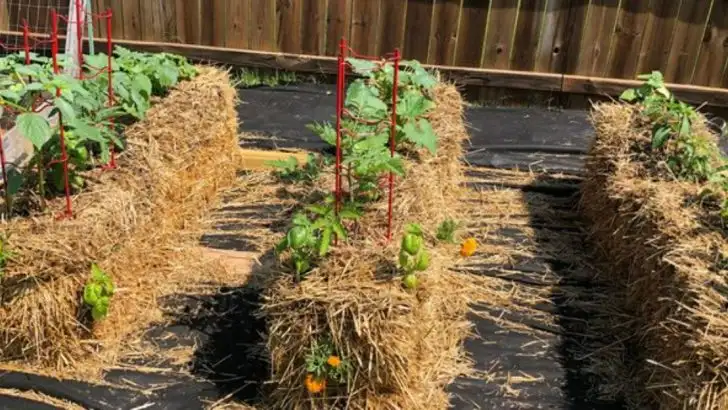Straw bale gardening sounds foolproof—until your tomatoes flop and your bale grows mushrooms. It’s tempting. No digging. No tilling. Just a tidy rectangle of promise. But beneath that golden glow lurk beginner pitfalls that can turn your garden into a soggy mess. Maybe you forgot to condition the bale. Or you planted too soon—hello, lukewarm compost salad. Watering from the top? Rookie move. And don’t even think about skipping support for your climbing plants. Seasoned growers know the secrets. They prep like pros, plant with precision, and treat their bales like gourmet compost piles. The result? Jungle-worthy yields in neat, straw-lined rows. If you’ve got straw dreams and veggie goals, skip the trial and error. Learn from the pros, avoid the face-palms, and let your bales do the heavy lifting. Because straw bale gardening can be magic—once you know what not to do.
Incorrect Bale Selection

Selecting the wrong type of bale can set your garden up for failure. Straw bales, not hay, should be your choice. Hay bales contain seeds that sprout weeds. A gardener might assume any bale works, but experienced ones know better.
Good straw bales are golden and seed-free. When purchasing, check for color and texture. Learn to distinguish between straw and hay. It could save you a season’s worth of frustration. Avoid bales that appear too green or too rotted.
Choose wisely and set your garden on the path to thriving growth.
Improper Conditioning
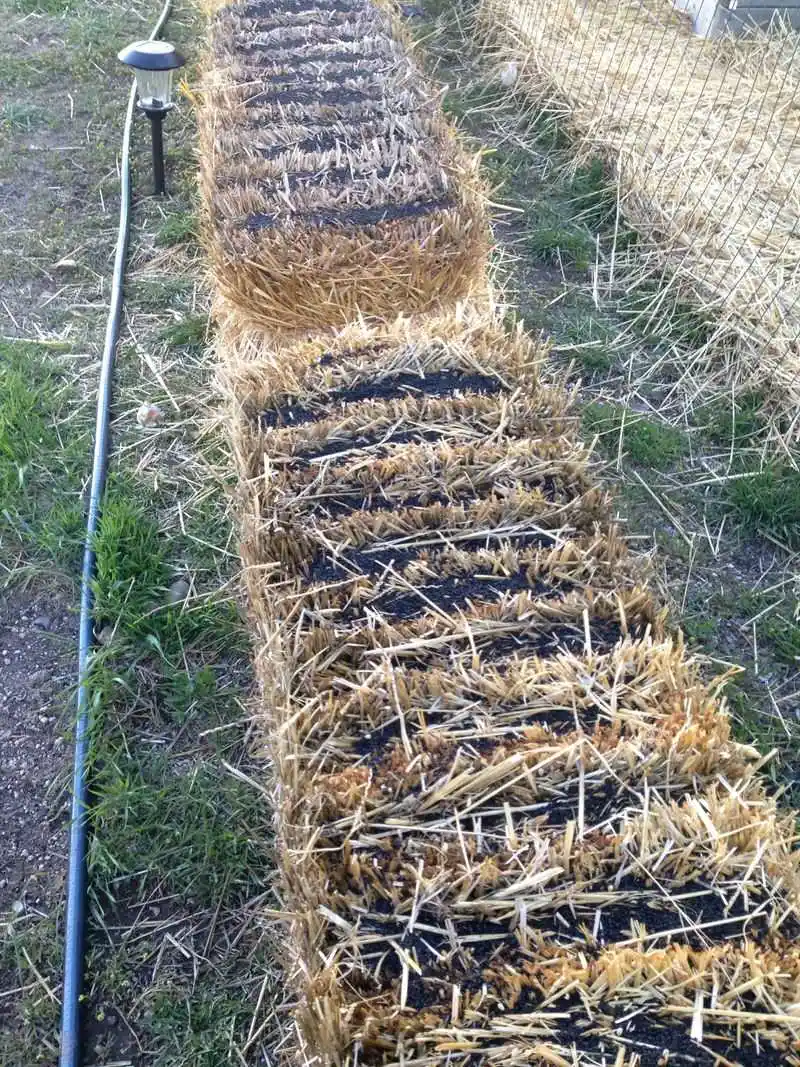
Conditioning bales is a step first-timers often skip. Proper conditioning transforms bales into fertile ground. Experienced gardeners soak bales, applying fertilizer to kickstart decomposition.
A common error is rushing this process. Take your time, as the process typically takes two weeks. The goal is a nutrient-rich environment for planting. Skipping conditioning leads to nutrient-poor conditions.
Spend time preparing your bales. It’s the foundation of a healthy garden. Patience pays off with bountiful yields later.
Planting Too Early
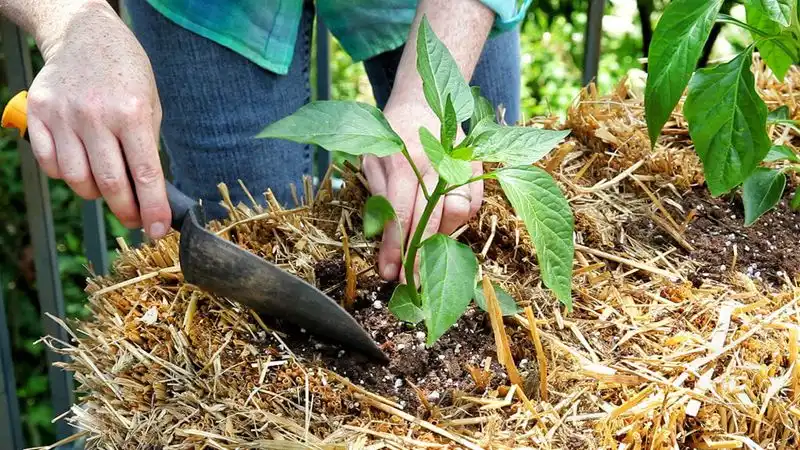
Timing is crucial in straw bale gardening. Eager first-timers often plant too soon. Frost can damage young plants, leading to a disappointing start. Experienced gardeners wait for the right conditions.
Monitoring the weather is essential. Ensure frost has passed before planting. Keeping an eye on nighttime temperatures can prevent loss.
Patience here leads to healthier, more robust plants. Timing your planting to the season is a key factor for success.
Ignoring Moisture Levels

Moisture management is often overlooked. Straw bales dry out quickly, more so than traditional gardens. This can lead to wilting plants and frustrated gardeners.
Experienced gardeners keep a close watch on moisture levels. Using a moisture meter can prevent over or under-watering. It’s a balance that ensures vibrant plant growth.
Consistent monitoring helps maintain a thriving garden. Don’t let your plants get thirsty!
Overcrowding Plants
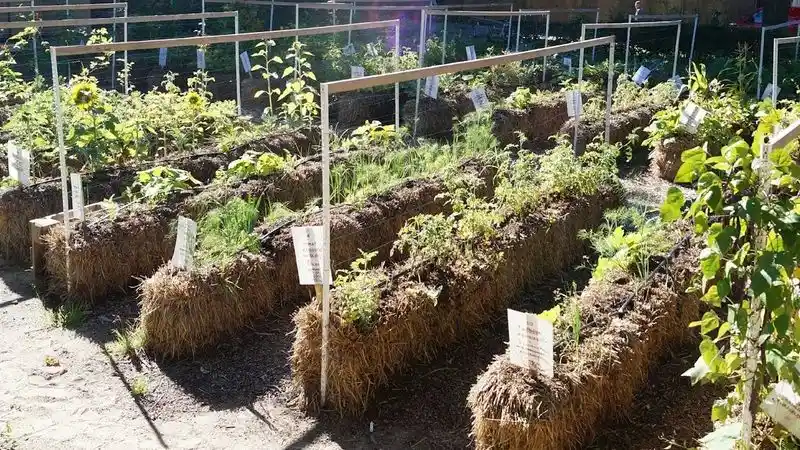
Space is key in straw bale gardening. Overcrowding is a mistake many novices make. Plants need room to grow and access to sunlight and nutrients.
Experienced gardeners plan spacing carefully. Overcrowded bales lead to competition for resources. This results in smaller, unhealthy plants.
Strategic planting ensures each plant thrives. Giving them space leads to a lush, productive garden.
Neglecting Pest Control
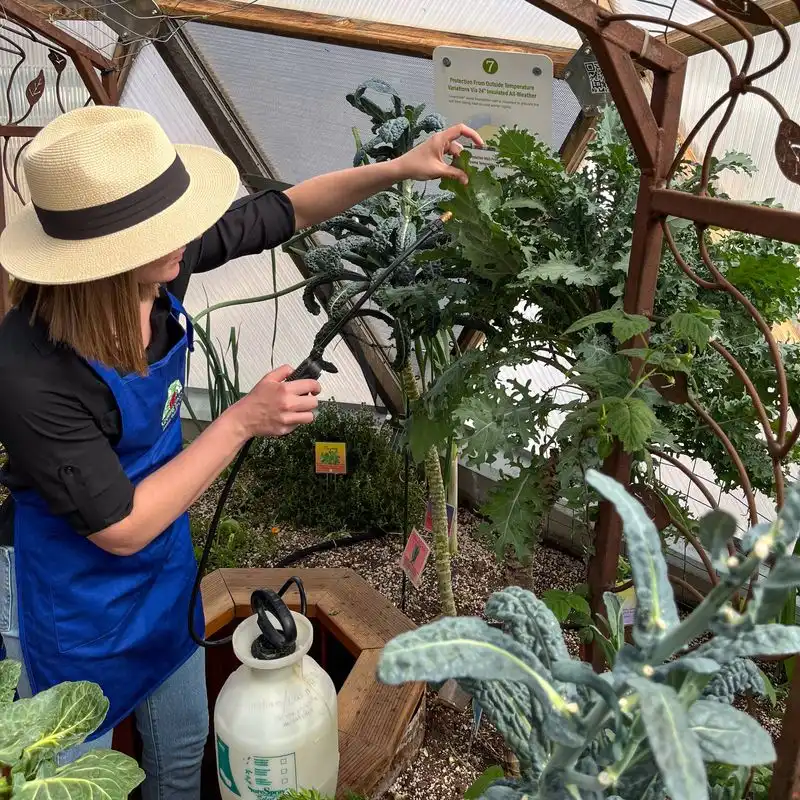
Pests can quickly become a problem in straw bale gardens. First-timers might not anticipate the vulnerability of their bales. Regular checks and pest control methods are essential.
Experienced gardeners incorporate pest management into their routine. Natural remedies or organic pesticides help manage the threat. Ignoring pests can lead to damage and reduced yields.
Stay vigilant to keep your garden healthy and productive.
Using the Wrong Fertilizer
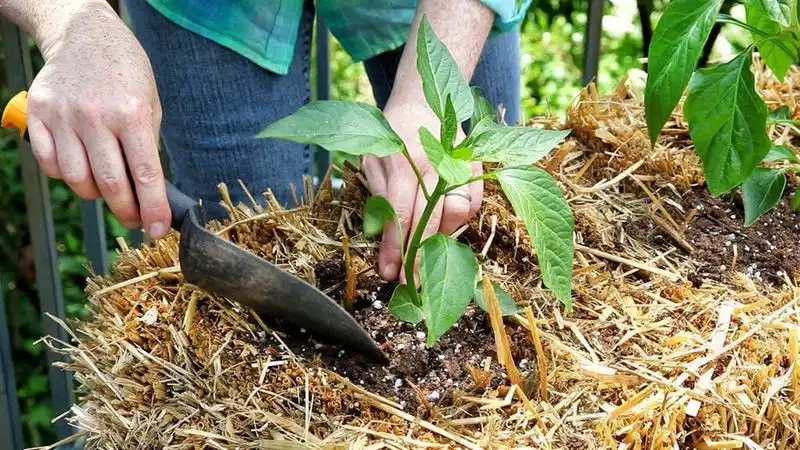
Choosing the right fertilizer is crucial. Straw bales require specific nutrients for optimal plant growth. First-timers might use improper fertilizers, hindering plant development.
Opt for a balanced fertilizer or one specific to straw bale gardens. Experienced gardeners know the importance of nutrient balance.
Matching the fertilizer to your plant’s needs leads to robust growth. Avoid generic options that may not support your garden’s unique requirements.
Poor Sunlight Exposure
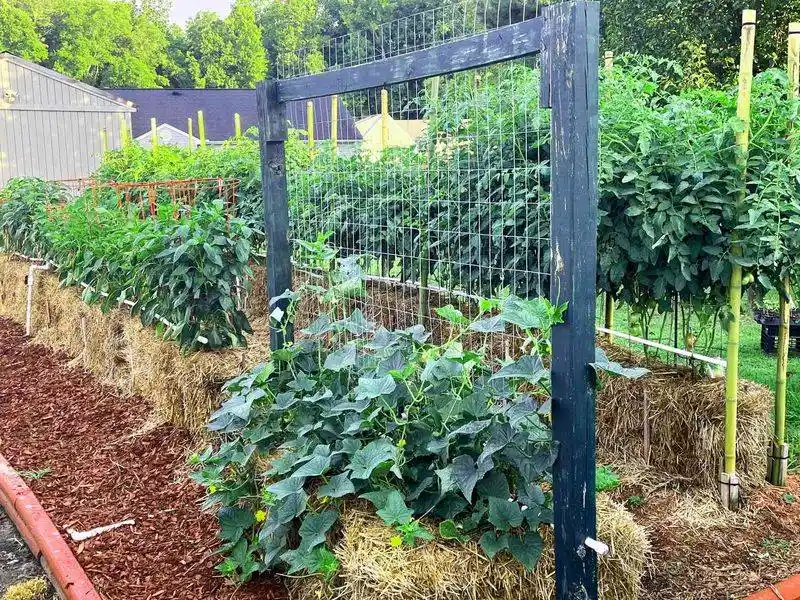
Sunlight is essential for any garden. Placing bales in shady areas limits plant growth. First-timers often overlook this simple yet critical aspect.
Experienced gardeners choose sunny spots for their bales. The right location can make a significant difference in yield. Ensuring your garden receives adequate light is key.
Assessing your yard for sunlight patterns helps position bales effectively. Maximize sun exposure for better results.
Incorrect Watering Techniques
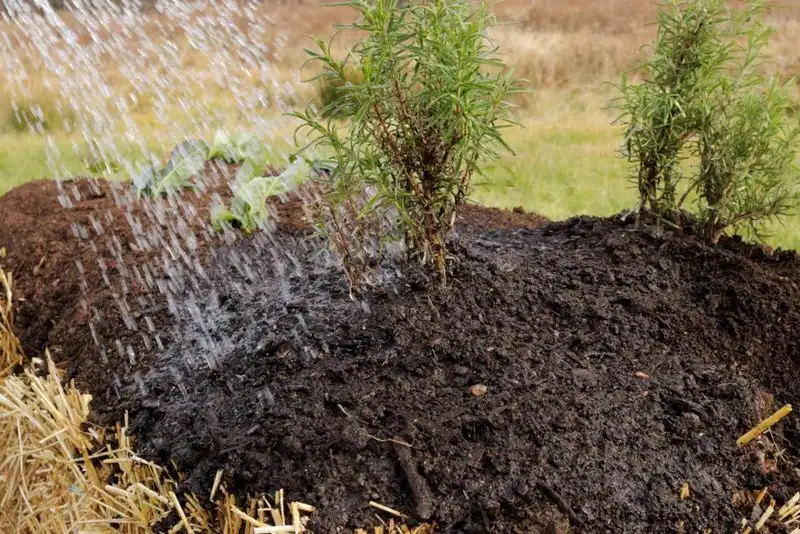
Watering can be tricky in straw bale gardening. Incorrect techniques lead to waterlogged bales or dry roots. First-timers often struggle with this balance.
Consistent and even watering is vital. Experienced gardeners might use drip irrigation to ensure uniform moisture levels.
Finding the right method for your garden prevents common water issues. Properly watered bales support healthy plant development.
Ignoring Plant Rotation

Plant rotation is often forgotten by beginners. Keeping the same plants in bales year after year depletes nutrients and leads to disease.
Experienced gardeners rotate crops to maintain soil health. Understanding plant families aids in planning rotation.
Rotating crops ensures fresh nutrients and minimizes pest cycles. It’s a practice that leads to long-term garden success.
Underestimating Bale Decomposition
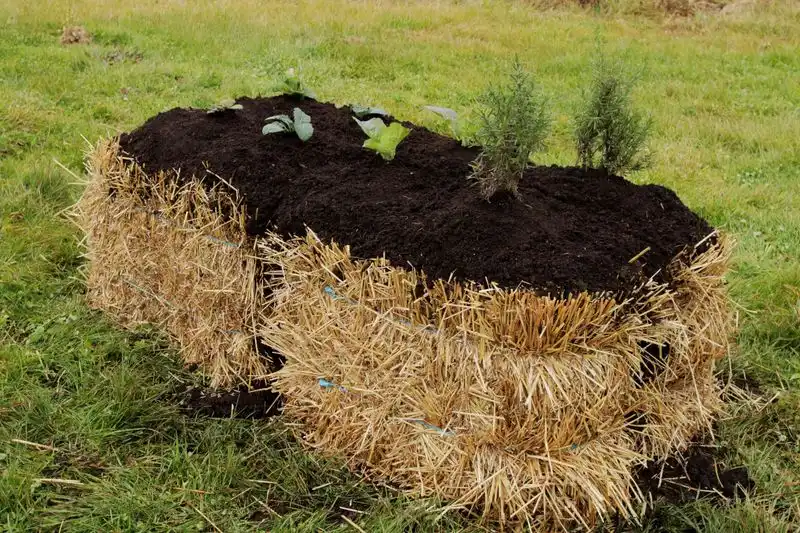
Straw bales break down over time. First-timers may not account for this natural process. Failing to anticipate decomposition affects plant support and nutrient supply.
Experienced gardeners plan for bale replacement or reinforcement. Understanding the lifecycle of a bale helps manage expectations.
Keeping an eye on bale condition ensures stable support for plants throughout the season.
Failure to Add Support Structures
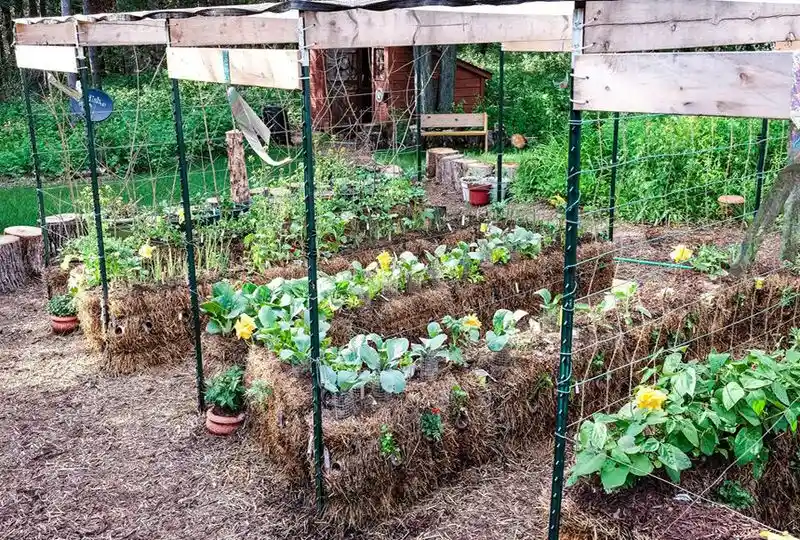
Support structures are essential for certain plants. First-timers might neglect this, leading to toppled plants and damaged bales.
Experienced gardeners use stakes, cages, or trellises to support growing plants. This prevents breakage and improves plant health.
Proper support leads to a tidy and efficient garden, especially for climbing or heavy plants. Consider what your plants need and plan accordingly.
Not Adjusting for Climate Variations
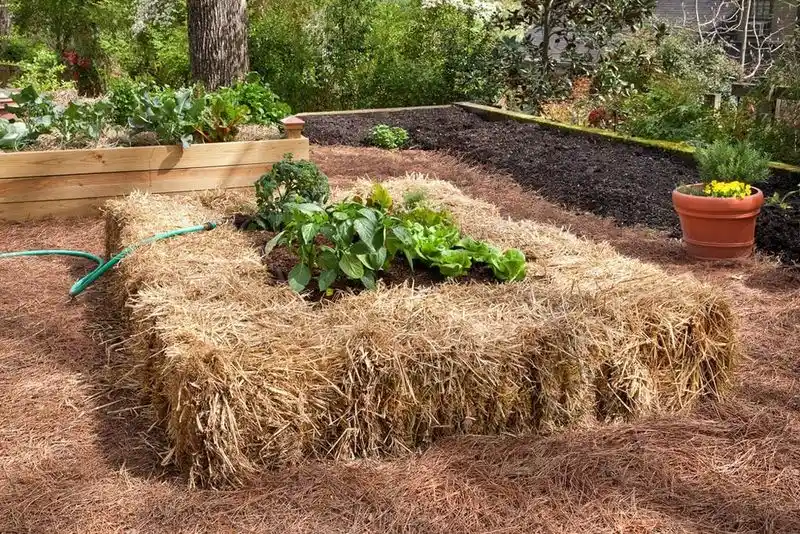
Climate variations can impact straw bale gardens significantly. First-timers may not adjust their practices to accommodate changing weather.
Experienced gardeners adapt to climate variations, using covers or windbreaks as needed. This flexibility protects plants from unexpected weather changes.
Understanding your local climate and adjusting gardening practices accordingly ensures consistent growth and reduces risk.

